Contents
Contrary to popular belief, Beijing and Chinese cabbage are not the same thing, but two different cultures that differ significantly in appearance. Although they are part of the same family and are close “relatives”, so the difference in chemical composition is minimal. In terms of culinary use, both cultures can be called “interchangeable”.
Definition and description
Beijing cabbage is often called salad cabbage, in its homeland it is known as “petsai”. Chinese is called mustard or celery, its original name is “pak choy” or “bok choy”. Both cultures “represent” the Cabbage family, but the difference in their “appearance” is obvious.
Chinese cabbage
Herbaceous plant with a two-year development cycle, belonging to the Cruciferous. On an industrial scale and on personal plots, it is grown during one season.
Japanese and Chinese gardeners have been cultivating it for more than one millennium. But in Our Country (as well as in the rest of the world) it is not sufficiently “hyped”, in popularity it is significantly inferior to Beijing.
The most significant difference between Chinese cabbage and most of its “relatives” is that it does not form a head. The plant is a relatively “loose” rosette of leaves with a height and diameter ranging from 20-50 cm.
The leaf blades are round or oval, with a slightly pronounced “blistering” of the surface and smooth edges. The veins are clearly defined, slightly convex, white or pale green, rarely bluish-gray. Petioles of the same shade, very juicy and fleshy, fit tightly to each other.
There is practically no difference in taste between certain varieties or hybrids. They eat mainly leafy plates, almost indistinguishable from spinach. Petioles are also eaten, they are rougher in texture, leaving a slight pungent-bitter aftertaste.
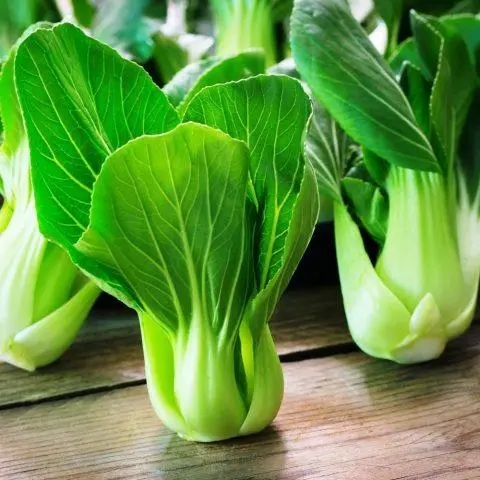
An adult outlet brings 150-250 g of greenery
Chinese cabbage
It is also a herbaceous plant with a two-year development cycle. Cultivated as an annual, gardeners and farmers are “interested” in heads of cabbage, and not seeds that ripen by the end of the second season.
Beijing cabbage is a rosette without a stem. Its height and diameter are 15-35 cm. Thin and delicate leaves “curl” into a loose head of elongated cylindrical shape.
Most varieties and hybrids have light green leaves, less often they are purple, yellowish or white. The central vein is very wide and flat. The stalk is practically absent, its place is occupied by a yellowish core from the “embryos” of leaf plates.
The taste is typically cabbage, neutral-fresh. The leaves are thin, but very juicy. The whole head of cabbage is used for food. Its average weight is 0,7-1 kg.
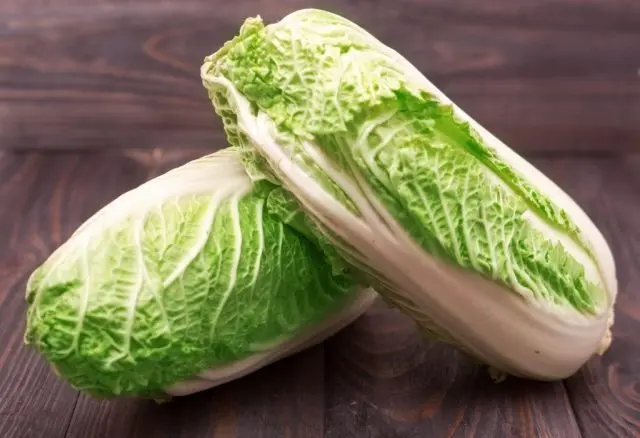
The entire surface of the sheet plates is “swollen” with large “bubbles”, the edges are corrugated or wavy
What is the difference between Chinese and Chinese cabbage
It is possible to confuse Chinese and Beijing cabbage only at the stage of growing seedlings. The difference in the “appearance” of the formed rosettes is obvious even to a non-specialist in the field of botany.
head of cabbage and leaves
The main difference between Beijing cabbage and Chinese cabbage is that the latter does not form a head. The leaves are denser and more resilient to the touch. Peking has no petioles of leaf plates.
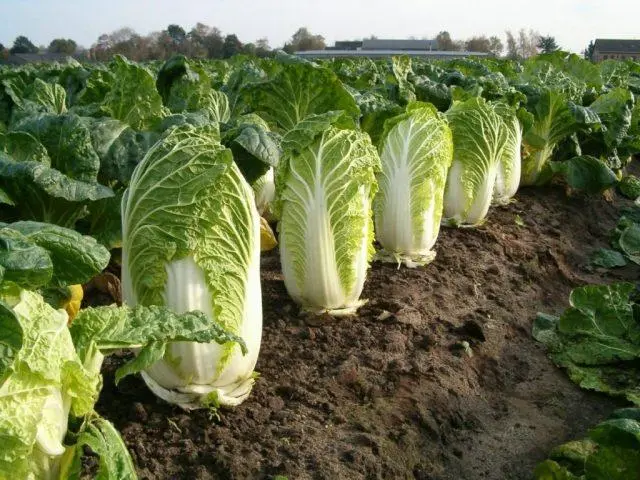
In terms of leaf color, Beijing cabbage is more diverse, although this applies to a few varieties and hybrids.
Size
The difference in size between crops is in favor of Chinese cabbage. Her rosette is taller and “spreading”.
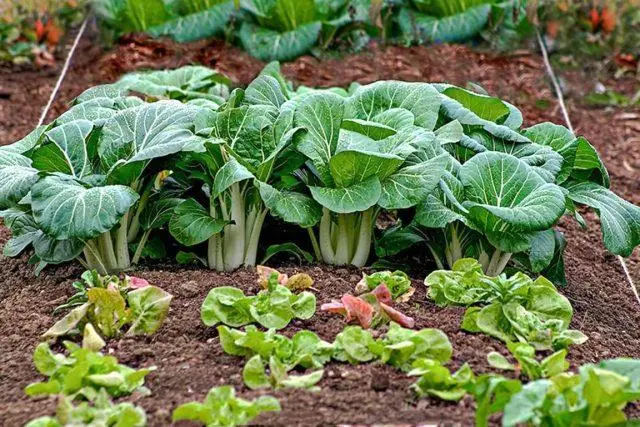
In the garden, Chinese cabbage will take up more space
Chemical composition and benefits
Both of these types of cabbage are low in calories. The difference between them is minimal – 16 and 13 kcal per 100 g, respectively. The content of proteins, fats and carbohydrates is also almost identical.
Both crops are extremely rich in chemical composition, which determines their health benefits. Both Chinese and Beijing cabbage contain:
- vitamins A, C, E, K, PP, D, the whole group B;
- macro- and microelements (sodium, potassium, phosphorus, magnesium, calcium, zinc, iron, copper, selenium, manganese);
- pectin and fiber;
- natural sugars;
- biologically active substances with antioxidant properties.
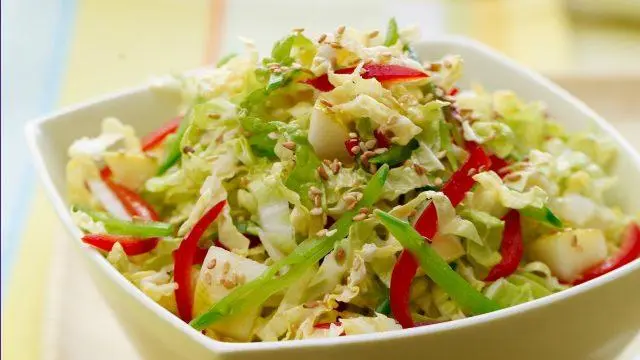
Beijing and Chinese cabbage are recommended to be included in the diet for those who are on a diet.
Application
Both Beijing and Chinese cabbage are in demand in cooking. In principle, in any recipes they are interchangeable. What can be cooked:
- salads (the most popular combination is with fresh vegetables and fruits, herbs, dietary chicken meat);
- soups;
- main dishes
- vegetable side dishes and casseroles;
- “green” smoothies;
- pies or dumplings.
There is also no difference in cooking methods. Both Beijing and Chinese cabbage can be fried, stewed, baked, steamed, boiled. They are also suitable for homemade preparations – both varieties are salted, pickled, fermented.
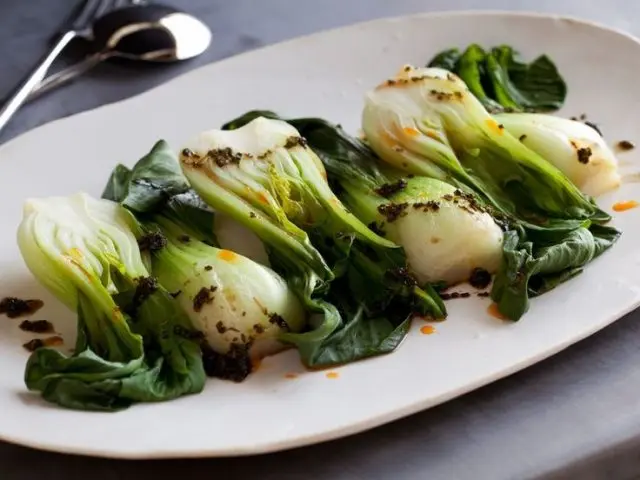
There is almost no difference in taste in salted and pickled form with the usual white cabbage
Conclusion
Beijing cabbage and Chinese cabbage have similar names, but they are not synonyms for the same culture. The difference between them is obvious – just look at the above-ground part of the plants. Similarities, of course, also exist – this is manifested both in the chemical composition and in the “culinary” purpose, as well as in cold resistance, rapid maturation and relative ease of cultivation.









